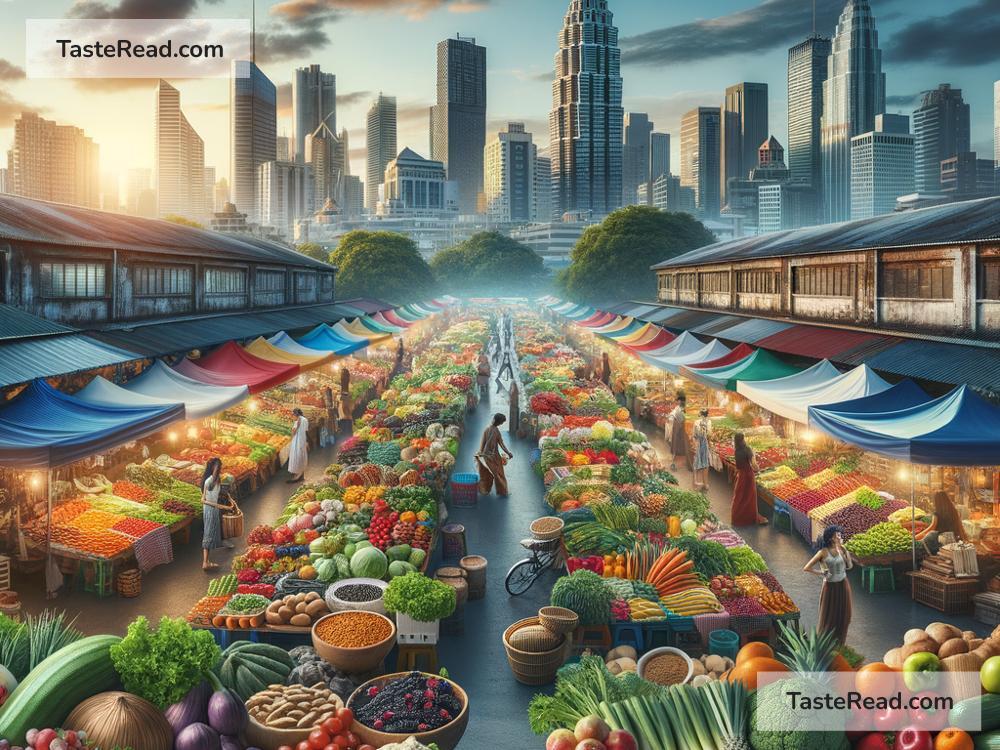The Impact of Food Infrastructure on Nutrition
Everyone deserves access to healthy food. Food doesn’t just keep us full; it’s what builds our bodies, fuels our minds, and keeps us free from disease. But did you know that the places and systems that grow, store, package, and deliver food—called food infrastructure—have a huge impact on nutrition? Let’s explore how food infrastructure shapes what we eat and how healthy we are.
What Is Food Infrastructure?
Food infrastructure includes all the parts of the food system that help get food from farms to our tables. Imagine how a carrot travels from a field to your plate—it goes through different steps:
- Growing: Farmers grow crops like fruits and vegetables or raise animals for meat and dairy products.
- Processing: Factories process food for safety, packaging, or taste (e.g., turning milk into cheese or carrots into frozen carrot sticks).
- Storing: Food may be stored in warehouses, storage facilities, or refrigerators until it can be delivered.
- Transportation: Trucks, trains, and ships carry food to stores, markets, and schools.
- Selling: Grocery stores, restaurants, and markets sell food to people.
At every stage, food infrastructure can affect what food is available, how fresh or nutritious it is, and whether it’s affordable.
What Happens When Food Infrastructure Is Strong?
When food infrastructure works well, people have better access to nutritious food. For example:
-
More Variety: If transportation systems are strong, farmers can send a wider range of fruits, vegetables, grains, and proteins to towns and cities. More variety means people can choose different foods that help them meet their nutritional needs.
-
Affordability: Efficient storage and transportation can reduce food waste. When less food spoils, prices stay lower, and more people can afford healthy options.
-
Accessibility: Infrastructure like grocery stores and markets make fresh food available to communities. Schools and hospitals also become sources of healthy meals with a well-run food system.
Strong infrastructure connects people to food that helps prevent malnutrition, obesity, and illnesses like diabetes.
What Happens When Food Infrastructure Is Weak?
Unfortunately, in some places, food infrastructure is weak or broken. This can lead to “food deserts”—areas where people don’t have easy access to fresh or healthy food. Weak food infrastructure can cause problems such as:
-
Limited Choices: If transportation and storage systems are poor, fresh fruits and vegetables may not reach certain communities. People in these areas are forced to rely on processed foods like chips and candy.
-
Higher Costs: Poor infrastructure leads to more waste and less efficiency, which makes food more expensive, especially healthy options like fresh produce.
-
Health Problems: When communities lack access to affordable, nutritious food, people may suffer from malnutrition, obesity, or vitamin deficiencies. These health issues can lead to bigger problems like heart disease or diabetes.
Weak food infrastructure can also hurt farmers and food workers. If they can’t get their products to consumers, they face financial struggles and may stop producing healthy foods altogether.
Real-Life Examples
Let’s look at some real-life examples of how food infrastructure impacts nutrition:
-
Urban Areas: In cities where grocery stores are plentiful and public transportation is strong, people can access a variety of healthy foods. However, in cities with food deserts where convenience stores dominate, people may struggle to find fresh fruit and vegetables. Instead, they are more likely to buy processed foods that are high in sugar, salt, and fat.
-
Rural Areas: In rural communities, farmers often grow nutritious food, but weak transportation systems can make it hard to deliver fresh produce to grocery stores in faraway cities. As a result, urban areas may end up with processed food, while rural communities miss out on diverse options.
-
Developing Countries: In developing countries, food infrastructure is often weak, and refrigeration systems may not be common. Fresh fruits, vegetables, and dairy products may spoil before reaching markets. This reduces the availability of healthy foods and increases reliance on shelf-stable but less nutritious choices, like instant noodles and canned goods.
How Can We Improve Food Infrastructure?
To improve nutrition, we need better food infrastructure. Here are some ideas:
-
Invest in Transportation: Governments and businesses can build better roads, railways, and shipping systems to ensure food can reach every community.
-
Support Local Farmers: Programs that connect local farmers directly to schools, hospitals, or markets can make fresh, nutritious food more available.
-
Build Better Storage Systems: Refrigeration and warehouses can stop food from spoiling, increasing the supply of affordable fresh produce.
-
Expand Grocery Stores: Bringing more grocery stores to rural areas, food deserts, and low-income neighborhoods can improve access to healthy options.
-
Education: Teaching farmers, food workers, and consumers about nutrition ensures that food systems produce and prioritize healthy choices.
Improving food infrastructure isn’t just about fixing systems; it’s about making sure everyone has the tools to live a healthy life.
Conclusion
Food infrastructure is like the backbone of nutrition. When it works well, families enjoy fresh, affordable food and better health. But when it’s weak, people may struggle to find nutritious meals, which can lead to serious health problems. By investing in stronger food systems, we can help create a future where everyone has the tools to eat well—and thrive.
Healthy food shouldn’t be a luxury; it should be a basic right. Improving food infrastructure brings that goal closer to reality, one meal at a time.


